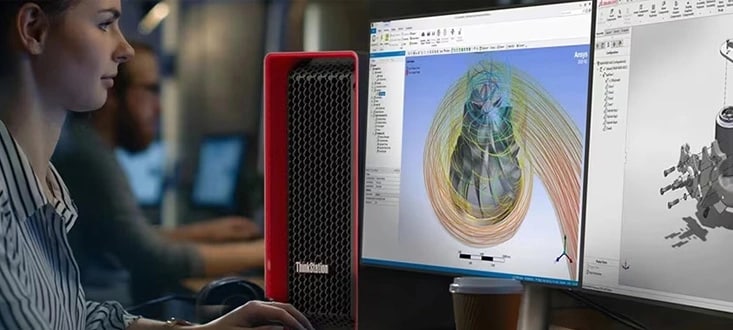-

 Accessibility
Accessibility -

 Contact Us
Contact UsSales:
Order Support:
-

 Rewards
Rewards -

 Account
Account -

 Cart
Cart -
Discover the latest PCs at Lenovo.com >
|
-
LenovoPRO Small Business Store
|
-

 Accessibility
Accessibility -

 Contact
ContactHelp placing an order
Business order help
Existing order help
-

 Rewards
Rewards -

 Account
Account -

 Cart
Cart
-
LenovoPRO Small Business Store
|
-

 Accessibility
Accessibility -

 Locator
Locator -

 Contact Us
Contact UsHelp placing an order
Business order help
Existing order help
-

 Rewards
Rewards -

 Account
Account -

 Cart
Cart
-
LenovoPRO Small Business Store
|
-

 Accessibility
Accessibility -

 Contact
ContactHelp placing an order
Business order help
Existing order help
-

 Rewards
Rewards -

 Account
Account -

 Cart
Cart
-
LenovoPRO Small Business Store
|
-

 Accessibility
Accessibility -

 Contact
ContactHelp placing an order
Business order help
Existing order help
-

 Rewards
Rewards -

 Account
Account -

 Cart
Cart
Intel Core i7 vs. Intel Core i9
Intel® Core™ i7 and Intel® Core™ i9 processors are the most advanced members of Intel's renowned Core series of high-end computer CPUs. Systems with Core i7 and i9 processors are typically more expensive than models running lesser chips, but each version brings advantages that are worth considering, depending on your needs.
Intel launched its Core i7, Core i5 and Core i3 product lines between 2008-2010 and has sold millions of the powerful CPUs since their debut. Each series have seen significant speed enhancements and other improvements thanks to Intel's ongoing succession of die-shrinks and new processor microarchitectures (Coffee Lake, Sky Lake, Tiger Lake, etc.). The Core i9, introduced in 2017, added still more power to the line-up, now boasting up to 10 cores and 20 threads – a truly impressive CPU.
The rest of this FAQ gives additional information to help you choose between these two great Intel processors. Before moving on, though, here are some quick links to help you view the comparative costs and features of Core i7 and Core i9 PCs from Lenovo:
- Lenovo Core i7 laptops
- Lenovo Core i7 desktops
- Lenovo Core i9 laptops
- Lenovo Core i9 desktops,
If the high end of the Core series isn’t for you, don’t worry. There are lower cost options that are still highly capable. For more, visit “Intel Core i3 vs. Intel Core i5” and “Intel Core i5 vs. Intel Core i7.”
| Specification | Intel Core i7 | Intel Core i9 |
|---|---|---|
| Cores |
4-8 |
6-18 |
| Threads |
8-16 |
12-36 |
| Clock Speed |
2.6-4.5 GHz |
2.6-5.0 GHz |
| Cache |
8-12 MB |
12-19.25 MB |
| Hyper-Threading |
Yes |
Yes |
| Turbo Boost |
Yes |
Yes |
| Overclocking |
No |
Yes |
Comparing Intel Core i7 and Intel Core i9 processors
The numbering scheme alone tells you that an Intel Core i9 CPU is superior to an Intel Core i7 one in most respects. The i9 series delivers more cores, more threads, higher maximum operating frequencies (speeds) and bigger caches. Yet it also carries a higher price – which could make the still-highly-capable Core i7 a good choice for many buyers.
Remember, too, that Intel’s Core CPUs sometimes overlap in terms of operating speeds, core counts and so on. So a top-end Core i7 could be as good as a base-model Core i9 for certain tasks and activities. Always carefully examine the specifications of any new system you’re about to buy.
It’s also good to keep in mind that Intel regularly releases new “generations” of its processor architecture (10th gen, 11th gen, and so on). And chips from multiple generations are sometimes available for sale at the same time. This means consumers can sometimes save money by purchasing a laptop or desktop powered by an earlier-generation Core CPU with the desired specs.
Why buy an Intel Core i7 laptop or desktop?
The Intel Core i7 is the company’s “performance” CPU band, offering both high processing speeds and impressive multi-tasking capabilities. Core i7-based laptops and i7-based desktops are built for users who need to do more than everyday home/office computing and computer gaming, for which multiple Core i3 and Core i5 models will suffice. Typical Core i7 buyers might use their systems for creating 3D animation and VR environments, or to play high-end video games with simultaneous live-streaming.
As this FAQ is written, the top Core i7 processors have up to eight cores and 16 threads, giving them a leg-up on the 4- and 6-core models that dominate the more mainstream Core i5 line. In addition, the i7's bigger on-chip cache allows it to keep more of your “working data” ready for processing. With a Core i7 CPU, you can keep multiple demanding applications running smoothly – with minimal delays. And you’ll save a bit compared to systems with the Core i9.
Intel Core i7 PCs: High-level specs
Table 1 reviews the specifications (high-level) of 10th Gen Intel Core i7 processors as of late 2020.*
Table 1 High-level technical specifications of 10th gen Intel Core i7 CPUs (Sept. 2020)
| Cores/ Hyperthreading | Base Frequency | Maximum Turbo Frequency | Cache | |
|---|---|---|---|---|
| Core i7 Laptops |
4-8 / Yes |
1.00-2.70 GHz |
3.80-5.10 GHz |
8-16 MB |
| Core i7 Desktops |
8 / Yes |
2.00-3.80 GHz |
4.50-5.10 GHz |
16 MB |
*Available and announced products. Some Intel processor SKUs may not be available on Lenovo PCs. Always check the listed specs of any system you buy.
Intel Core i7 PCs: Cost, users, and use cases
The following text gives a broad look at the cost of Intel Core i7 laptops and desktops compared to other members of the Core family, along with the typical users and use cases of this high-performance CPU:
- Core i7 PC – Cost category
- The i7 is the "performance" member of Intel Core brand
- Core i7 PC – Typical users
- Heavy multi-taskers (highly demanding apps)
- Competitive video gamers, especially if they stream, too
- Engineers and scientists, content professionals, etc.
- Core i7 PC – Use cases
- Everything a Core i3 and Core i5-based system can do, plus faster 3D rendering (with larger files), workstation-grade projects, simultaneous PC gaming/live-streaming, etc.
If you’re unsure about which processor is inside a particular Lenovo PC, it’s easy to get the answer. Start by selecting a specific kind of PC (laptop, desktop, 2-in-1, tablet, Chromebook or workstation), then examine the specs provided under each product image. Or follow any of the “Learn More” links for full details about each PC you’re considering.
Why buy an Intel Core i9 laptop or desktop?
The Intel Core i9 is often called Intel's processor line for "CPU enthusiasts," the early-adopters who always demand the industry’s latest and greatest. A Core i9-powered desktop or i9-powered laptop is great for users whose work requires extremely advanced computing capabilities (editing 4K video, for example). It’s also popular with high-end gamers who play live-action, multi-player, VR-based titles that can benefit from a CPU with hyper-fast cycle times and high core-thread counts.
The Core i9 debuted in 2017 along with a new socket-motherboard combination to support it. As this FAQ was written, the i9 had evolved to a deliver up to10 cores and 20 threads (desktop version). It costs more than the other members of the Intel Core family, but for certain applications, games and other workloads, the difference could be meaningful.
Intel Core i9 PCs: High-level specs
Table 1 lists the top-level specifications of Intel Core i9 processors (10th gen) as of late 2020.*
Table 1 High-level technical specifications of 10th gen Intel Core i9 CPUs (Sept. 2020)
| Cores/ Hyperthreading | Base Frequency | Maximum Turbo Frequency | Cache | |
|---|---|---|---|---|
| Core i9 Laptops |
8 / Yes |
2.40 GHz |
5.30 GHz |
16 MB |
| Core i9 Desktops |
10 / Yes |
1.90-3.70 GHz |
4.60-5.30GHz |
20 MB |
*Available and announced products. Some Intel processor SKUs may not be available on Lenovo PCs. Always check the listed specs of any system you buy.
Intel Core i9 PCs: Cost, users, and use cases
Here are some broad statements addressing the comparative cost of Intel Core i9-enabled systems versus models with lesser processors, along with the kinds of users (and use cases) that are most likely to benefit from an advanced Core i9 PC:
- Core i9 PC – Cost category
- The Core i9 is the “enthusiast” line of Intel Core CPUs
- Core i9 PC – Typical users
- Processor early-adopters
- Users of extremely demanding software
- Gamers who always want the latest/greatest
- Workstation users, server operators, etc.
- Core i9 PC – Use cases
- Everything the lesser Intel processors can do plus core-intensive activities such as editing huge video files, rendering complex engineering designs, acting as a server, and so on.
Now that you know how the Core i7 and Core i9 processors differ, are you ready to make your decision? Both CPUs are highly advanced and popular with “power users” around the globe. For some, a Core i7-powered laptop or Core i7-powered desktop will be more than enough. But for a select few, a Core i9-based laptop or Core i9-based desktop will be a better choice.
Intel and Intel Core are trademarks of Intel Corporation or its subsidiaries in the U.S. and/or other countries.



